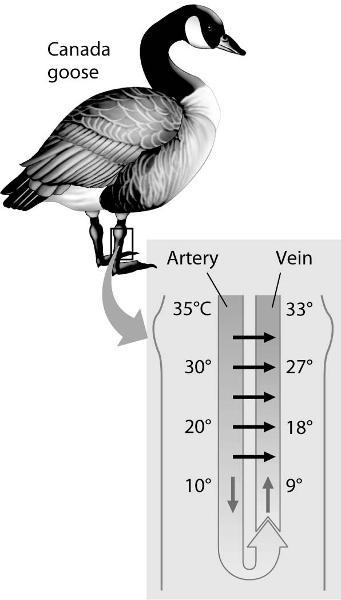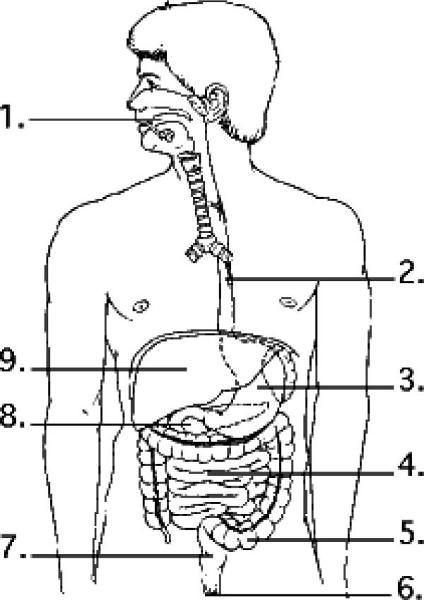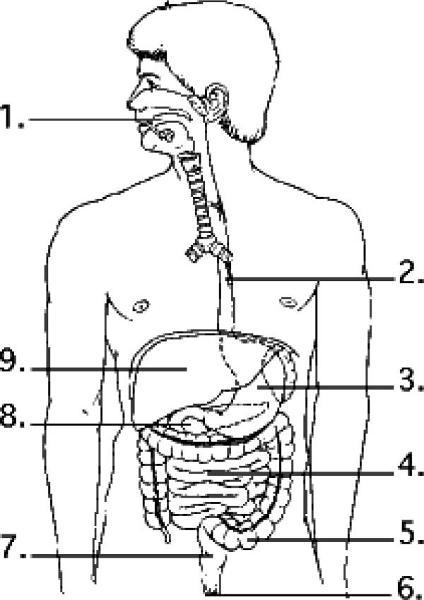Instructions for Side by Side Printing
- Print the notecards
- Fold each page in half along the solid vertical line
- Cut out the notecards by cutting along each horizontal dotted line
- Optional: Glue, tape or staple the ends of each notecard together
Set #2 Johnson Intro Bio II Final Review
front 1 The larvae of some insects are merely small versions of the adult,
whereas the larvae of other insects look completely different from
adults, eat different foods, and may live in different habitats. Which
of the following most directly favors the evolution of the latter,
more radical, kind of metamorphosis? | back 1 Answer: B |
front 2 Which tissue type, or organ, is NOT correctly matched with its germ
layer tissue? | back 2 Answer: C |
front 3 Among protostomes, which morphological trait has shown the most
variation? | back 3 Answer: B |
front 4 The protostome developmental sequence arose just once in evolutionary
history, resulting in two main subgroups - Lophotrochozoa and
Ecdysozoa. What does this finding suggest? | back 4 Answer: B |
front 5 The Hox genes came to regulate each of the following in what
sequence, from earliest to most recent? | back 5 Answer: D |
front 6 The presence of a lophophore in a newly discovered species would
suggest that the species ________. | back 6 Answer: B |
front 7 Arthropod exoskeletons and mollusk shells both ________. | back 7 Answer: C |
front 8 Which of the following could be considered the most recent common
ancestor of living tetrapods? | back 8 Answer: A |
front 9 Which characteristic is common to all the modern representatives of
all major reptilian lineages (turtles, lepidosaurs, crocodilians, and
birds)? | back 9 Answer: B |
front 10 What is believed to be the most significant result of the evolution
of the amniotic egg? | back 10 Answer: A |
front 11 (DIAGRAM) In the diagram below, point "A" is ________;
point "B" is ________. | back 11 Answer: B |
front 12 The various taxonomic levels (for example, phyla, genera, classes) of
the hierarchical classification system differ from each other on the
basis of | back 12 Answer: B |
front 13 Some beetles and flies have antler-like structures on their heads,
much like male deer do. The existence of antlers in beetle, fly, and
deer species with strong male-male competition is an example of
________. | back 13 Answer: C |
front 14 (DIAGRAM) Refer to the figure above. Which of the following forms a
monophyletic group? | back 14 Answer: B |
front 15 The duplication of homeotic (Hox) genes has been significant in the
evolution of animals because it ________. | back 15 Answer: D |
front 16 What is true of the Cambrian explosion? | back 16 Answer: A |
front 17 Which of the following is (are) unique to animals? | back 17 Answer: C |
front 18 Both animals and fungi are heterotrophic. What distinguishes animal
heterotrophy from fungal heterotrophy is that only animals derive
their nutrition by | back 18 Answer: B |
front 19 The last common ancestor of all animals was probably a | back 19 Answer: A |
front 20  As you are on the way to Tahiti for a vacation, your plane
crash-lands on a previously undiscovered island. You soon find that
the island is teeming with unfamiliar organisms; and you, as a student
of biology, decide to survey them (with the aid of the Insta-Lab
Portable Laboratory you brought along in your suitcase). You select
three organisms and observe them in detail, making the notations found
int he figure above. Which organism would you classify as an
animal? | back 20 Answer: C |
front 21 The most ancient branch point in animal phylogeny is that between
having | back 21 Answer: D |
front 22 In examining an unknown animal species during its embryonic
development, how can you be sure what you are looking at is a
protostome | back 22 Answer: B |
front 23 What is the probable sequence in which the following clades of
animals originated, from earliest to most recent? | back 23 Answer: B |
front 24 Some researchers claim that sponge genomes have homeotic genes, but
no Hox genes. If true, this finding would | back 24 Answer: C |
front 25 Which of the following is most likely to be aquatic? | back 25 Answer: A |
front 26 Why might researchers choose to use molecular data (such as ribosomal
RNA sequences) rather than morphological data to study the
evolutionary history of animals? | back 26 Answer: D |
front 27 You find what you believe is a new species of animal. Which of the
following characterisitics would enable you to argue that it is more
closely related to a flatworm than it is to a roundworm? | back 27 Answer: D |
front 28 Which characteristic is shared by cnidarians and flatworms? | back 28 Answer: D |
front 29 Which of the following organisms would you expect to have the largest
surface-area-to-volume ratio? Assume that all of the following are the
same total length. | back 29 Answer: A |
front 30 Nematodes and arthropods both ________. | back 30 Answer: A |
front 31 While sampling marine plankton in a lab, a student encounters large
numbers of fertilized eggs. The student rears some of the eggs in the
laboratory for further study and finds that the blastopore becomes the
mouth. The embryo develops into a trochophore larva and eventually has
a true coelom. These eggs probably belonged to a(n) ________. | back 31 Answer: C |
front 32 All arthropods ________. | back 32 Answer: B |
front 33 Which of the following combinations correctly matches a phylum to its
description? | back 33 Answer: C |
front 34 Which of the following is a characteristic of all chordates at some
point during their life cycle? | back 34 Answer: A |
front 35 Which extant chordates are postulated to be most like the earliest
chordates in appearance? | back 35 Answer: A |
front 36 Which of the following characteristics is shared by a hagfish and a
lamprey? | back 36 Answer: C |
front 37 Vertebrates and tunicates share | back 37 Answer: A |
front 38 The earliest known mineralized structures in vertebrates are
associated with which function? | back 38 Answer: B |
front 39 Suppose, while out camping in a forest, you found a chordate with a
long, slender, limbless body slithering across the ground near your
tent. This critter could be ________. | back 39 Answer: D |
front 40 Jaws first occurred in which extant group of fishes? | back 40 Answer: B |
front 41 It is believed that the coelacanths and lungfish represent a crucial
link between other fishes and tetrapods. What is the major feature in
these fish in support of this hypothesis? | back 41 Answer: A |
front 42 Which of the following characteristics evolved independently in
mammals and birds? | back 42 Answer: C |
front 43 Arrange these groups in order from most inclusive (most general) to
least inclusive (most specific). | back 43 Answer: D |
front 44 Which of these characteristics added most to vertebrate success in
relatively dry environments? | back 44 Answer: A |
front 45 Mammals and birds eat more often than reptiles. Which of the
following traits shared by mammals and birds best explains this
habit? | back 45 Answer: A |
front 46 Which of the following are the only extant animals that descended
directly from dinosaurs? | back 46 Answer: D |
front 47 Which of these are amniotes? | back 47 Answer: D |
front 48 Which of the following is the most inclusive (most general) group,
all of whose members have fully opposable thumbs? | back 48 Answer: C |
front 49 Unlike eutherians, both monotremes and marsupials | back 49 Answer: B |
front 50 In what respect do hominins differ from all other
arthropoids? | back 50 Answer: C |
front 51 Arrange the following taxonomic terms from most inclusive (most
general) to least inclusive (most specific). | back 51 Answer: B |
front 52 With which of the following statements would a biologist be most
inclined to agree? | back 52 Answer: A |
front 53 (TABLE) The table above is a comparison of several characteristics of
H. floresiensis to those of nine other hominin species (arranged
roughly from oldest to most recent). What do these data
suggest? | back 53 Answer: C |
front 54 The evolution of similar insulating skin coverings such as fur, hair,
and feathers in mammals and birds is a result of ________. | back 54 Answer: C |
front 55 As the size of some animals has evolved to greater sizes, the
effectiveness of their adaptations that promote exchanges with the
environment have also increased. For example, in many larger
organisms, evolution has favored lungs and a digestive tract with
________. | back 55 Answer: C |
front 56 Much of the coordination of vertebrate body functions via chemical
signals is accomplished by the ________. | back 56 Answer: D |
front 57 If you were to view a sample of animal tissue under a light
microscope and notice an extensive extracellular matrix surrounding a
tissue, which tissue type would you most suspect? | back 57 Answer: C |
front 58 Evolutionary adaptations that help diverse animals directly exchange
matter between cells and the environment include | back 58 Answer: B |
front 59 Most of the exchange surfaces of multicellular animals are lined with
| back 59 Answer: D |
front 60 Interstitial fluid is | back 60 Answer: D |
front 61 If you gently bend your ear, and then let go, the shape of your ear
will return because the cartilage of your ear contains
________. | back 61 Answer: B |
front 62 Environmental influences appear to contribute to cellular mutations
that lead to tumor growth. For example, certain diets lead to higher
incidence of colon cancers, and overexposure to sunlight leads to
higher incidence of skin cancers. The tissues in closest contact with
a carcinogen or mutagen (anything that causes genetic mutations) are
obviously the ones most likely to develop tumors. Carcinomas and
melanomas account for well over half of all cancers. What type of
tissue would you guess the term carcinoma and melanoma is most closely
associated with? | back 62 Answer: D |
front 63 An elephant and a mouse are running in full sunlight, and both
overheat by the same amount above their normal body temperatures. When
they move into the shade and rest, which animal will cool down
faster? | back 63 Answer: C |
front 64 The body's automatic tendency to maintain a constant and optimal
internal environment is termed | back 64 Answer: C |
front 65 Positive feedback differs from negative feedback in that | back 65 Answer: B |
front 66 In a cool environment, an ectotherm is more likely to survive an
extended period of food deprivation than would an equally sized
endotherm because the ectotherm | back 66 Answer: C |
front 67 Most land-dwelling invertebrates and all of the amphibians | back 67 Answer: A |
front 68  The thin horizontal arrows in the figure above show that the | back 68 Answer: C |
front 69 The temperature-regulating center of vertebrate animals is located in
the | back 69 Answer: C |
front 70 Certain nutrients are considered "essential" in the diets
of some animals because | back 70 Answer: C |
front 71 Ingested dietary substances must cross cell membranes to be used by
the body, a process known as | back 71 Answer: D |
front 72 In the digestive system, peristalsis is | back 72 Answer: A |
front 73 You discover a new species of bacteria that grows in aquatic
environments with high salt levels. While studying these bacteria, you
note that their internal environment is similar to the salt
concentrations in their surroundings. You also discover that the
internal salt concentrations of the bacteria change as the salt
concentration in their environment changes. The new species can
tolerate small changes in this way, but dies from large changes
because it has no mechanism for altering its own internal salt levels.
What type of homeostatic mechanism is this species using to regulate
its internal salt levels? | back 73 Answer: D |
front 74 The function of mechanical digestion is to break down large chunks of
food into smaller pieces. Why is this important? Smaller pieces of
food ________. | back 74 Answer: A |
front 75 A zoologist analyzes the jawbones of an extinct mammal and concludes
that it was an herbivore. The zoologist most likely came to this
conclusion based upon ________. | back 75 Answer: A |
front 76 In a well-fed human eating a Western diet, the richest source of
stored chemical energy in the body is | back 76 Answer: A |
front 77 Because the foods eaten by animals are often composed largely of
macromolecules, this requires the animals to have mechanisms for
| back 77 Answer: C |
front 78  Examine the digestive system structures in the figure above. Bacteria
that produce vitamins as products are residents of location | back 78 Answer: C |
front 79  Examine the digestive system structures in the figure above. The
highest rate of nutrient absorption occurs at location(s) | back 79 Answer: B |
front 80 Circulatory systems compensate for | back 80 Answer: B |
front 81 Organisms with a circulating body fluid that is distinct from the
fluid that directly surrounds the body's cells are likely to have
| back 81 Answer: B |
front 82 To adjust blood pressure independently in the capillaries of the
gas-exchange surface and in the capillaries of the general body
circulation, an organism would need a(n) | back 82 Answer: C |
front 83 Atria contract ________. | back 83 Answer: C |
front 84 Which of the following is the correct sequence of blood flow in birds
and mammals? | back 84 Answer: D |
front 85 If a molecule of CO₂ released into the blood in your left toe is
exhaled from your nose, it must pass through all of the following
except | back 85 Answer: A |
front 86 The velocity of blood flow is the lowest in capillaries because
| back 86 Answer: B |
front 87 A normal event in the process of blood clotting is the | back 87 Answer: C |
front 88 For a healthy 20-year-old at rest, arterial blood pressure is
typically ____ mm Hg at systole and ____ mm Hg at diastole. | back 88 Answer: A |
front 89 Small swollen areas in the neck, groin, and axillary region are
associated with | back 89 Answer: A |
front 90 Countercurrent exchange in the fish gill helps to maximize | back 90 Answer: C |